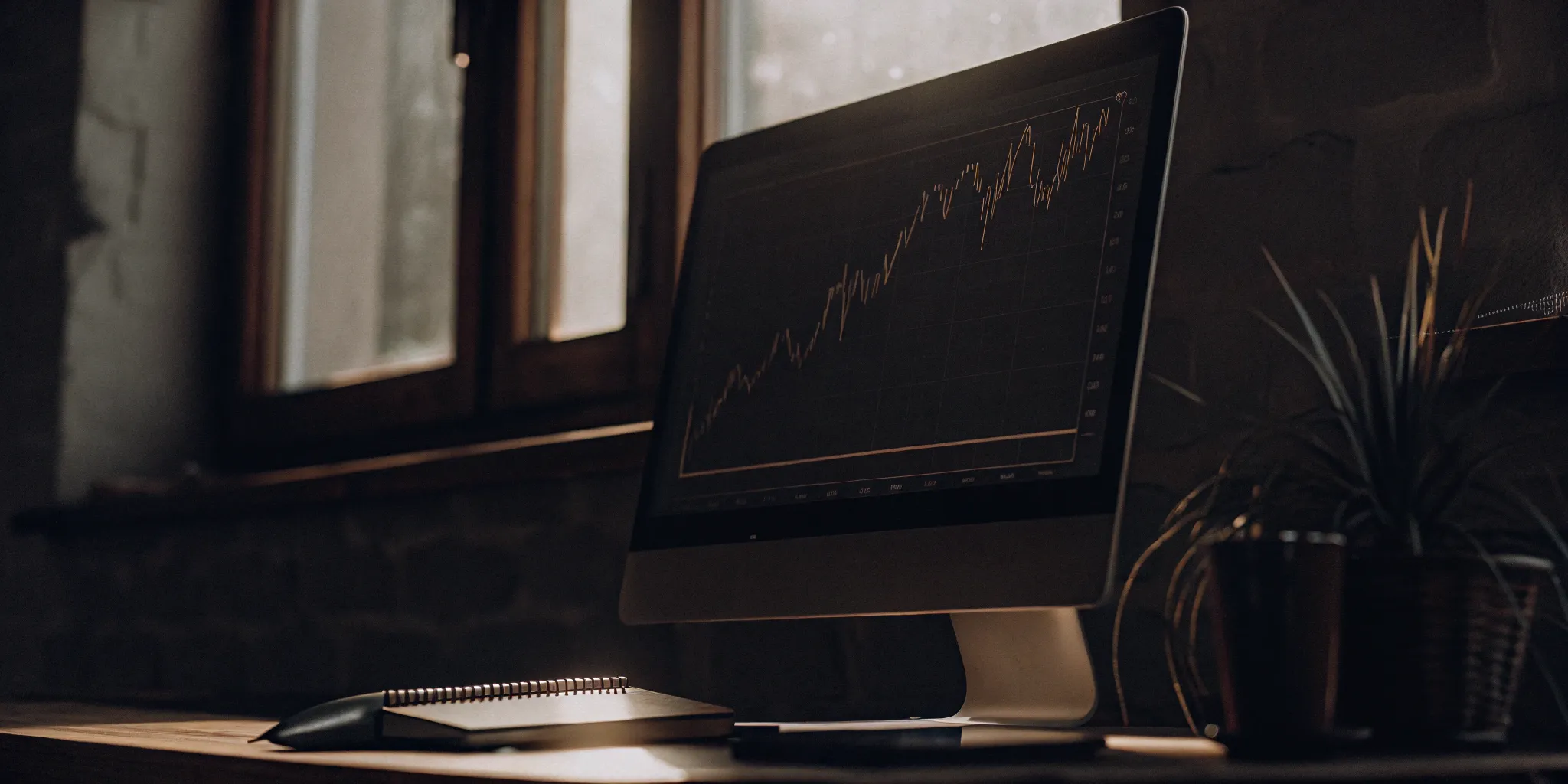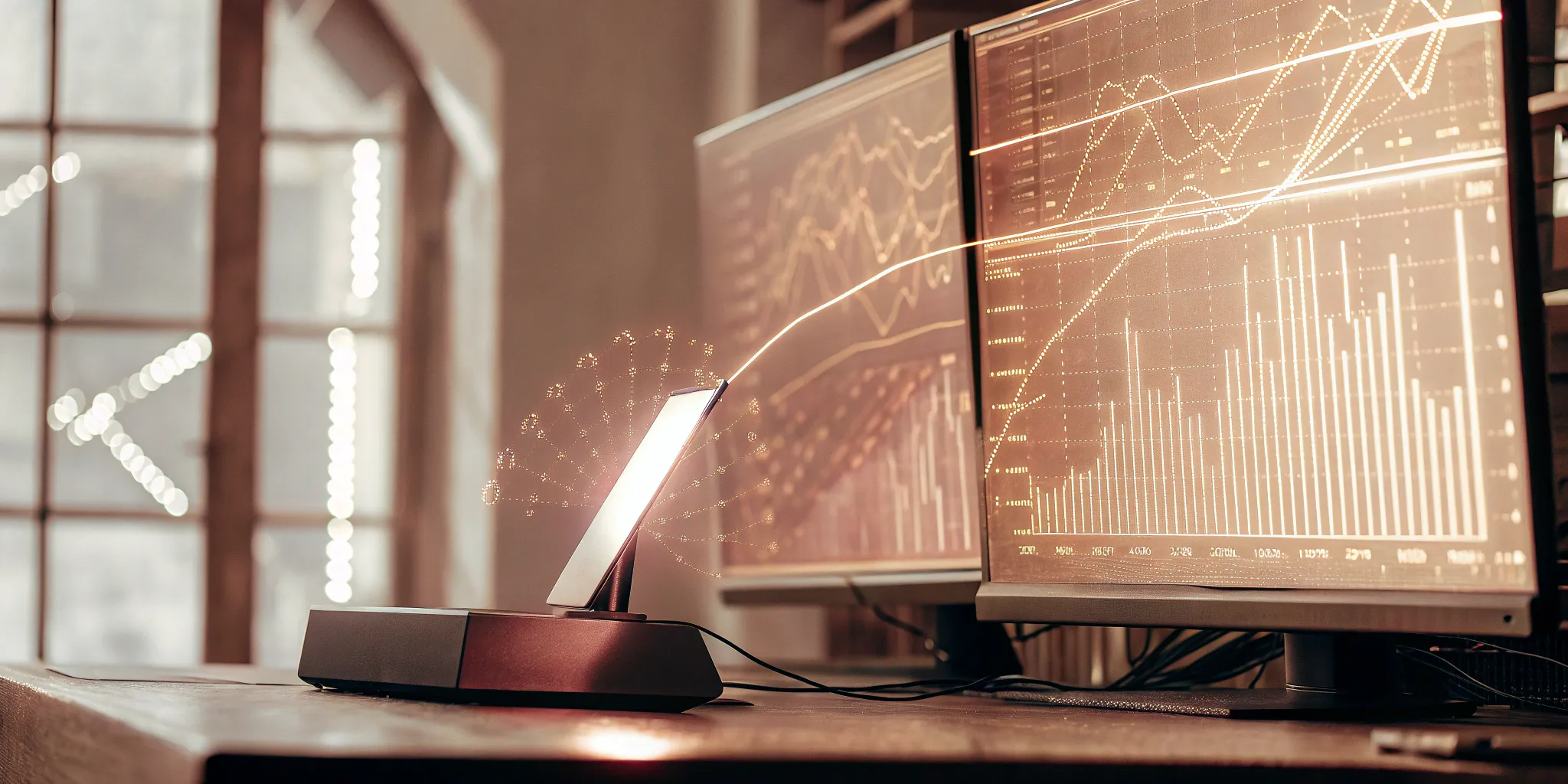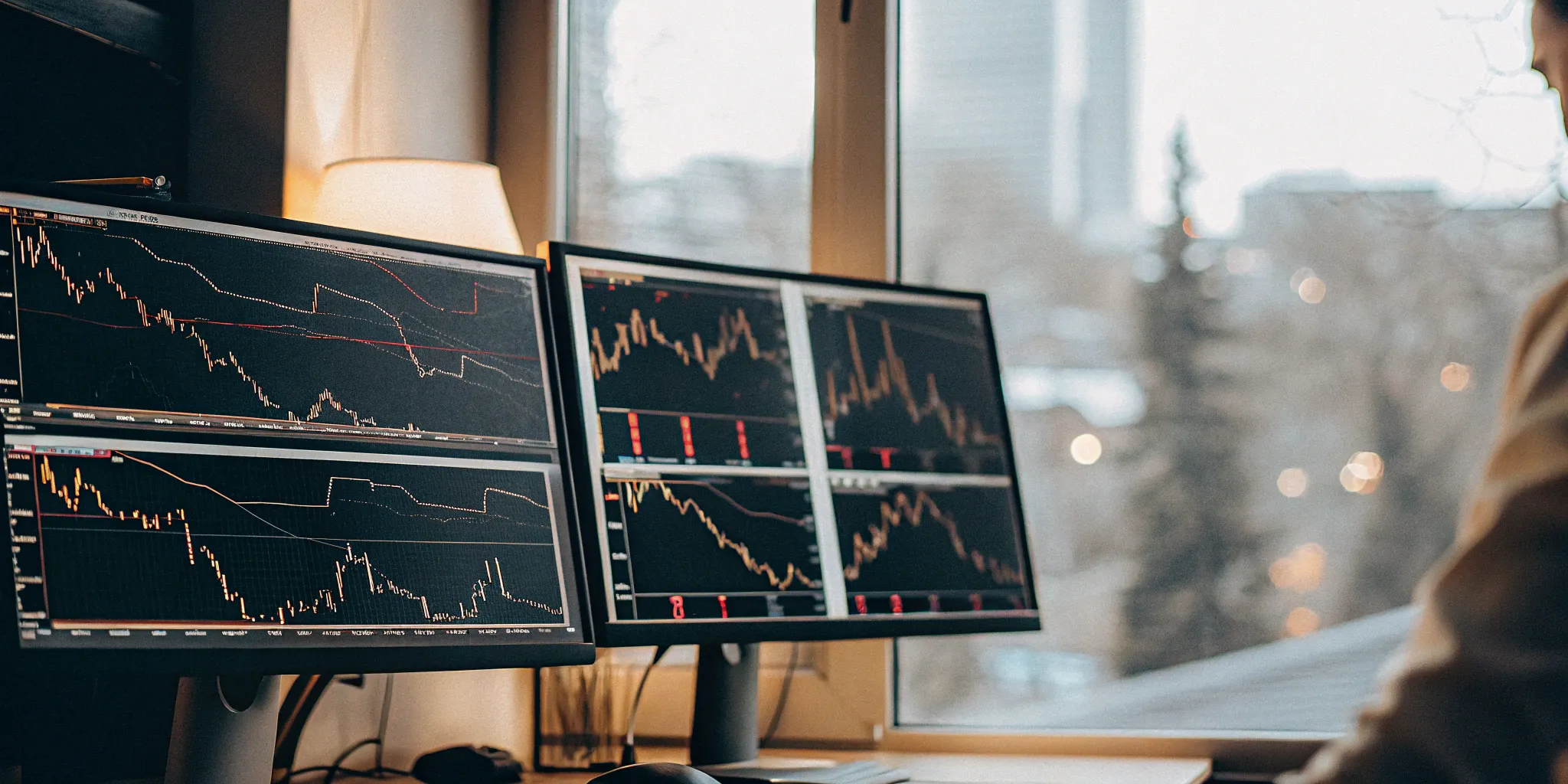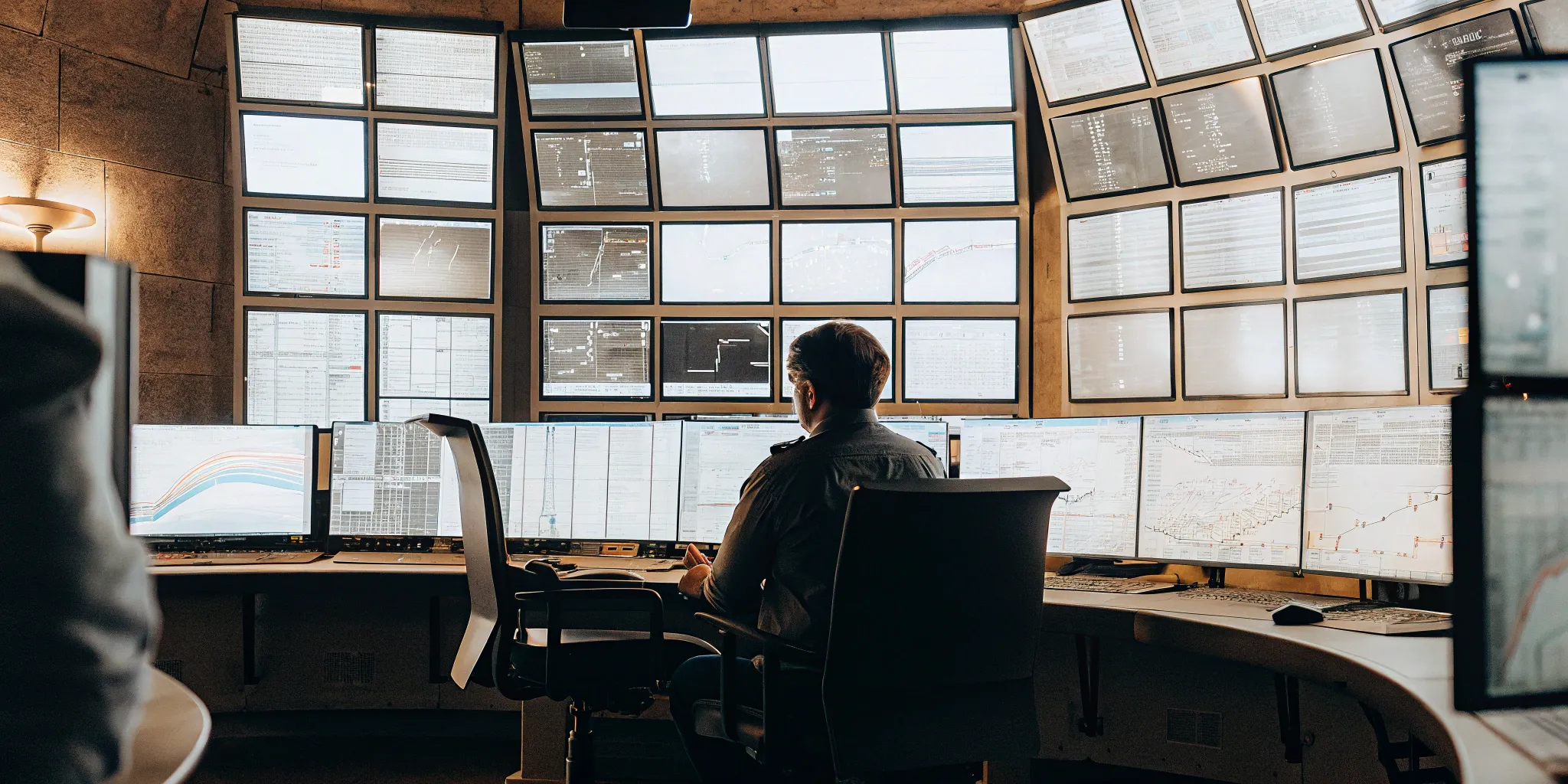The world of finance is evolving at warp speed, and artificial intelligence is at the forefront of this transformation. AI trading, once a niche concept, is now becoming mainstream, offering powerful tools for investors of all levels. But what exactly is AI trading, and how can you leverage it to your advantage? This article demystifies the world of AI trades, exploring the core technologies, strategies, and potential impact on financial markets. We’ll delve into the advantages and challenges, discuss how to choose the right AI trading platform, and look ahead at the future of this exciting field. Whether you’re a day trader, a long-term investor, or simply curious about the future of finance, this guide will provide valuable insights into the world of AI trading.
Key Takeaways
- AI offers powerful trading tools, but it’s not a magic bullet: From enhanced speed and accuracy to improved risk management, AI can significantly improve your trading. However, avoid over-reliance on algorithms; markets are dynamic and require continuous adaptation.
- Different AI trading strategies suit different needs: Understanding the nuances of algo-trading, high-frequency trading, and quantitative analysis is crucial for choosing the right approach. Consider your resources and technical expertise before diving in.
- Starting with AI trading requires a thoughtful approach: Select a platform that aligns with your goals, budget, and technical skills. Integrate AI gradually into your existing system, test thoroughly, and remember that ongoing learning is key to long-term success.
What is AI Trading?
AI trading uses artificial intelligence to make trading decisions. Think of it as having a super-powered assistant analyzing markets, identifying opportunities, and executing trades, all faster and often more accurately than a human could. This technology digs through mountains of data to find patterns and insights, helping investors make smarter choices. It’s become a game-changer for everyone from individual investors to large institutions. For a deeper look at how AI is transforming trading, check out this article on AI trading.
Definition and Core Concepts
At its core, AI trading blends predictive analytics and machine learning to analyze historical market data, generate investment ideas, and automatically execute buy and sell orders. This data-driven approach removes emotional biases that can sometimes lead human traders astray. Instead, AI focuses on objective data and statistical probabilities. This makes AI trading a powerful tool for optimizing returns and managing risk.
How AI Trading Works
AI trading employs a variety of sophisticated techniques to analyze information and execute trades. Data mining helps uncover hidden patterns, while sentiment analysis gauges market sentiment from sources like news articles and social media. Real-time analysis keeps the AI informed about current market conditions, allowing it to react quickly to changes. Predictive modeling forecasts future market movements, and risk modeling helps manage potential losses. AlgosOne offers a comprehensive overview of AI trading techniques. Essentially, AI trading systems process vast datasets, identify trends, and adapt to changing market dynamics, giving investors a significant edge. Generative AI also plays a key role, predicting market trends and analyzing unstructured data like social media sentiment, which can significantly impact asset prices.
Types of AI Trading Strategies
AI trading strategies vary depending on the goals and resources of the trader. Here’s a breakdown of some common approaches:
Algorithmic Trading
Algorithmic trading, often called algo-trading, uses computer programs to automatically execute trades based on pre-defined rules. These rules can be based on various factors, such as price movements, technical indicators, or fundamental analysis. Algo-trading removes emotional decision-making and allows for faster execution of trades, capitalizing on even small market fluctuations. It’s particularly useful for large-volume trades and complex strategies that would be difficult to manage manually.
High-Frequency Trading (HFT)
High-frequency trading (HFT) is a specialized form of algo-trading that executes a large number of trades at incredibly high speeds. HFT firms use powerful computers and sophisticated algorithms to identify and exploit tiny price discrepancies that exist for mere fractions of a second. This strategy requires significant technological investment and a deep understanding of market microstructure. While potentially lucrative, HFT also faces scrutiny due to its potential impact on market stability.
Quantitative and Sentiment Analysis
Quantitative trading relies on mathematical models and statistical analysis to identify investment opportunities. These models can incorporate a wide range of data, from historical price data and economic indicators to company financials and market sentiment. AI plays a crucial role in quantitative trading by enabling data mining, pattern recognition, and predictive modeling to forecast future price movements. Sentiment analysis, a subset of quantitative trading, uses natural language processing (NLP) to analyze text data from news articles, social media, and other sources to gauge market sentiment and predict its potential impact on asset prices. Generative AI can further enhance these strategies by creating synthetic data to train and refine trading models, leading to more accurate predictions and potentially higher returns.
What Technology Powers AI Trades?
AI trading isn’t magic—it’s powered by sophisticated technologies working in concert. Let’s break down the core components that drive these automated systems.
Machine Learning Algorithms
At the heart of AI trading are machine learning algorithms. These algorithms empower computer programs to sift through massive amounts of stock data, identifying patterns and making trading decisions faster than any human could. This speed and processing power allow AI to react to market changes in real time, capitalizing on fleeting opportunities. Think of it as having a tireless analyst working around the clock, constantly evaluating market conditions.
Natural Language Processing
Natural language processing (NLP) adds another dimension to AI trading. NLP allows systems to understand and interpret human language, which is key for sentiment analysis. By tracking news, social media, and other text-based sources, AI can gauge market sentiment and predict potential trends. This ability to process unstructured data provides a crucial edge in understanding the “why” behind market movements.
Big Data Analytics
Big data analytics plays a crucial role in fueling AI trading decisions. AI excels at data mining, uncovering hidden patterns within massive datasets. This includes analyzing historical price data, economic indicators, and even social media buzz. Real-time analysis capabilities allow AI to process this information instantly, enabling rapid responses to market fluctuations. Combined with sentiment analysis, this provides a comprehensive view of the market landscape.
Advantages of AI Trading
AI trading is transforming financial markets, offering several key advantages for investors of all levels. Let’s explore some of the core benefits driving this shift.
Improved Accuracy and Speed
Imagine analyzing thousands of data points and executing trades within milliseconds—a feat impossible for any human. AI trading systems excel here, leveraging computer programs and machine learning to process vast datasets and identify market opportunities faster and more accurately than traditional methods. This speed and accuracy translate to quicker reactions to market changes and potentially more profitable trades. AI can sift through news, financial reports, and even social media sentiment to pinpoint relevant information and execute trades with precision. This allows AI to identify subtle patterns and trends that humans might miss, leading to more informed trading decisions.
Enhanced Efficiency and Risk Management
Beyond speed and accuracy, AI offers significant improvements in efficiency and risk management. AI algorithms automate tasks like data mining and sentiment analysis, freeing up investors to focus on broader strategy. This automation also minimizes the impact of emotional biases, which can often lead to poor trading decisions. Furthermore, AI excels at risk modeling and stress testing, allowing for more effective risk mitigation and portfolio optimization. By automating complex analyses and decision-making, AI streamlines trading strategies and reduces the potential for human error. This automated risk assessment leads to more informed decisions and a more disciplined approach to trading.
Challenges and Risks of AI Trading
While AI trading offers exciting possibilities, it’s essential to understand the potential downsides. Like any investment strategy, AI trading has its challenges and risks. Knowing these can help you make informed decisions and approach AI trading with realistic expectations.
Over-Reliance on Algorithms
One of the biggest pitfalls is over-relying on algorithms. It’s tempting to think of AI as foolproof, but these systems are built on historical data. While they excel at recognizing patterns from the past, they can struggle when market conditions shift unexpectedly. Algorithms often lack transparency in their decision-making, making it difficult to understand the rationale behind a trade, as one expert notes. This opacity can be especially risky in volatile markets. Plus, even profitable bots can lose their competitive edge as market conditions evolve and other traders develop competing algorithms, a point discussed on Reddit. The market is dynamic, and static strategies, even AI-powered ones, can become less effective over time.
Market Volatility and Cybersecurity Concerns
AI trading bots aren’t designed to predict black swan events—sudden market crashes or periods of extreme volatility. These unpredictable scenarios can lead to substantial losses, as highlighted by Koinly. Another significant concern is cybersecurity. AI systems, particularly those managing large sums, can become targets for hackers. And the potential for errors within the AI software itself can amplify these risks, especially during volatile market conditions, as explained by Built In. A small glitch in the code could have major consequences. Choosing a platform with robust security measures and a proven track record is crucial.
Do AI Trading Bots Work?
The idea of automating profits with an AI trading bot is alluring, but it’s essential to approach this technology with realistic expectations. While AI can enhance trading strategies, it’s not a magic bullet. Let’s explore what influences a bot’s success and debunk some common misconceptions.
Factors Affecting Bot Success
Several factors contribute to an AI trading bot’s effectiveness. Access to robust computing power and high-quality, real-time market data is crucial. Individual traders often lack the resources of large firms, who leverage tools like the Bloomberg Terminal for a competitive edge. This disparity in resources can significantly impact a bot’s ability to process information and execute trades. Furthermore, market conditions are constantly evolving. Even a bot initially demonstrating profits can see its performance decline as market dynamics shift and other traders adapt. A successful bot needs adaptability and regular updates to maintain its edge.
Common Misconceptions
One common pitfall is mistaking correlation for causation. Identifying patterns in market data is relatively easy; understanding why those patterns exist is far more complex. A Reddit discussion on AI-based trading bots highlights this crucial distinction. Effective bots must analyze the causal relationships driving market movements, not just surface-level trends. Another misconception is viewing AI bots as a guaranteed path to profit. While AI can be a powerful tool, the market’s inherent unpredictability remains. AI bots should be seen as tools that assist in trading, not as foolproof profit generators, as discussed on the Golden Owl blog. Past performance, even with sophisticated AI, never guarantees future success.
How to Start AI Trading
So, you’re ready to explore the world of AI trading? Great! Whether you’re new to this or a seasoned trader, getting started with AI can feel like a big leap. This section breaks down how to approach AI trading, from selecting the right platform to integrating it with your current setup.

Choosing the Right AI Trading Platform
Finding the right AI trading platform is crucial. Think of it as choosing the right car for a road trip—you need something reliable, efficient, and suited to your destination. Consider these factors when making your decision:
- Asset Class Compatibility: Do you primarily trade stocks, forex, crypto, or something else? Make sure the platform supports your preferred markets. AlgosOne, for example, offers apps for various markets, including stocks, commodities, bonds, indices, forex, and crypto.
- Available Tools: What kind of AI tools are you looking for? Do you need a fully automated trading bot, a portfolio manager, or something that provides signals and helps you build strategies? Knowing what’s out there—portfolio managers, trading robots, signals, and strategy builders—will help you narrow your search.
- Ease of Use: How comfortable are you with technology? Some platforms are designed for beginners, while others cater to experienced traders. Look for a platform with a user-friendly interface and clear instructions.
- Cost and Fees: AI trading platforms come with varying costs and fee structures. Some charge monthly subscriptions, while others take a percentage of your profits. Factor these costs into your budget.
- Security and Reputation: Security is paramount when dealing with financial platforms. Research the platform’s security measures and look for reviews from other users.
Integrating AI with Existing Trading Systems
If you already have a trading system, you might be wondering how to integrate AI into your existing workflow. Many AI tools are designed to complement existing systems, not replace them entirely. Here’s how to approach integration:
- Identify Your Needs: What aspects of your trading could benefit from AI? Are you looking to automate trade execution, improve risk assessment, or gain access to more sophisticated market analysis? AI can bring numerous advantages, including faster trade execution and real-time risk assessment.
- Start Small: Don’t feel pressured to overhaul your entire system at once. Begin by integrating AI into a specific part of your process, such as identifying potential trades or managing risk. As you become more comfortable, you can gradually expand its use. For example, you could start by using AI trading bots to analyze market data and identify trends.
- Data Compatibility: Ensure that your existing systems and data feeds are compatible with the AI platform you choose. You may need to make some adjustments to ensure seamless data flow.
- Testing and Optimization: Once you’ve integrated AI, thoroughly test its performance and make adjustments as needed. Monitor its impact on your trading results and refine your approach over time. Remember, AI is a tool, and like any tool, it requires proper use and ongoing optimization for the best results.
The Future of AI Trading
AI trading is rapidly changing how financial markets operate, and its influence will only grow. From individual investors to large institutions, AI is empowering data-driven decisions. Let’s explore the emerging trends shaping the future of AI in trading.
Emerging Trends and Technologies
AI-driven trading is no longer a futuristic concept; it’s happening now. Robo-advisors and sophisticated algorithms are becoming increasingly accessible, allowing investors of all levels to harness the power of AI. This democratization of advanced trading tools is a significant trend, opening up opportunities previously limited to institutional players. We’re also seeing a rise in AI-powered algorithmic trading, automating trade execution based on predefined rules and market conditions. As these technologies evolve, expect more refined algorithms capable of handling increasingly complex trading strategies. The integration of machine learning is another key trend. These algorithms can adapt and learn from market data, constantly improving their performance over time. This continuous learning and adaptation are crucial for staying ahead in today’s dynamic markets.
Potential Impact on Financial Markets
The increasing adoption of AI trading has the potential to reshape financial markets in several ways. One key impact is the speed and efficiency of trade execution. AI algorithms can analyze vast amounts of data and execute trades much faster than any human, leading to increased liquidity and potentially reducing market volatility. Real-time risk assessment is another area where AI excels. By continuously monitoring market conditions and analyzing potential risks, AI can help traders make more informed decisions and mitigate potential losses. AI-powered systems can identify subtle market trends and execute trades with incredible precision, giving traders a significant edge. Furthermore, generative AI is emerging as a powerful tool for predicting market movements and identifying optimal trading opportunities. By analyzing historical data, news sentiment, and economic indicators, these algorithms can generate insights that would be impossible for humans to discern. This predictive capability has the potential to revolutionize how investors approach the market, enabling them to anticipate market shifts and capitalize on emerging trends.
Related Articles
- The Future of Finance: Algo Trading Insights
- How AI Improves Algo Trading: Speed, Accuracy & Profits – FN Capital
- AI-Powered Trading Solutions: An Investor’s Guide – FN Capital
- AI vs. Human Trading Performance: An Objective Comparison – FN Capital
- Fully Automated AI Trading: Grow Your Wealth with Software – FN Capital
Frequently Asked Questions
Is AI trading suitable for beginners?
Absolutely! Many platforms offer user-friendly interfaces and automated features that make AI trading accessible even without extensive market experience. Look for platforms with educational resources, demo accounts, and transparent fee structures. Starting with smaller investments and gradually increasing your exposure as you gain confidence is always a good approach.
What’s the difference between AI trading and algorithmic trading?
Algorithmic trading uses pre-programmed rules to execute trades automatically. AI trading takes this a step further by incorporating machine learning and other AI techniques. This allows AI systems to adapt to changing market conditions and learn from past data, potentially leading to more dynamic and responsive trading strategies. Think of algorithmic trading as a rule-based system, while AI trading adds a layer of intelligence and adaptability.
How much does AI trading cost?
Costs vary widely depending on the platform and the specific services offered. Some platforms charge monthly or annual subscription fees, while others may take a percentage of your profits. Some providers offer tiered pricing based on features and access levels. It’s essential to research different platforms and compare their pricing models to find one that aligns with your budget and investment goals.
What are the biggest risks of using AI for trading?
While AI can be a powerful tool, it’s crucial to be aware of the potential downsides. Over-reliance on algorithms without understanding market fundamentals is a common pitfall. Remember, AI systems are trained on historical data, and they may not perform well in unexpected market conditions. Cybersecurity risks and the potential for software glitches are also important considerations. Diversifying your investments and choosing a reputable platform with robust security measures can help mitigate these risks.
What is the future of AI in trading?
The future of AI in trading is bright, with continuous advancements in machine learning, natural language processing, and big data analytics. We can expect more sophisticated AI-powered tools and platforms that offer enhanced trading capabilities, personalized insights, and improved risk management. Generative AI, in particular, holds immense potential for predicting market trends and optimizing investment strategies. As AI technology evolves, it will likely play an even greater role in shaping the future of financial markets.





